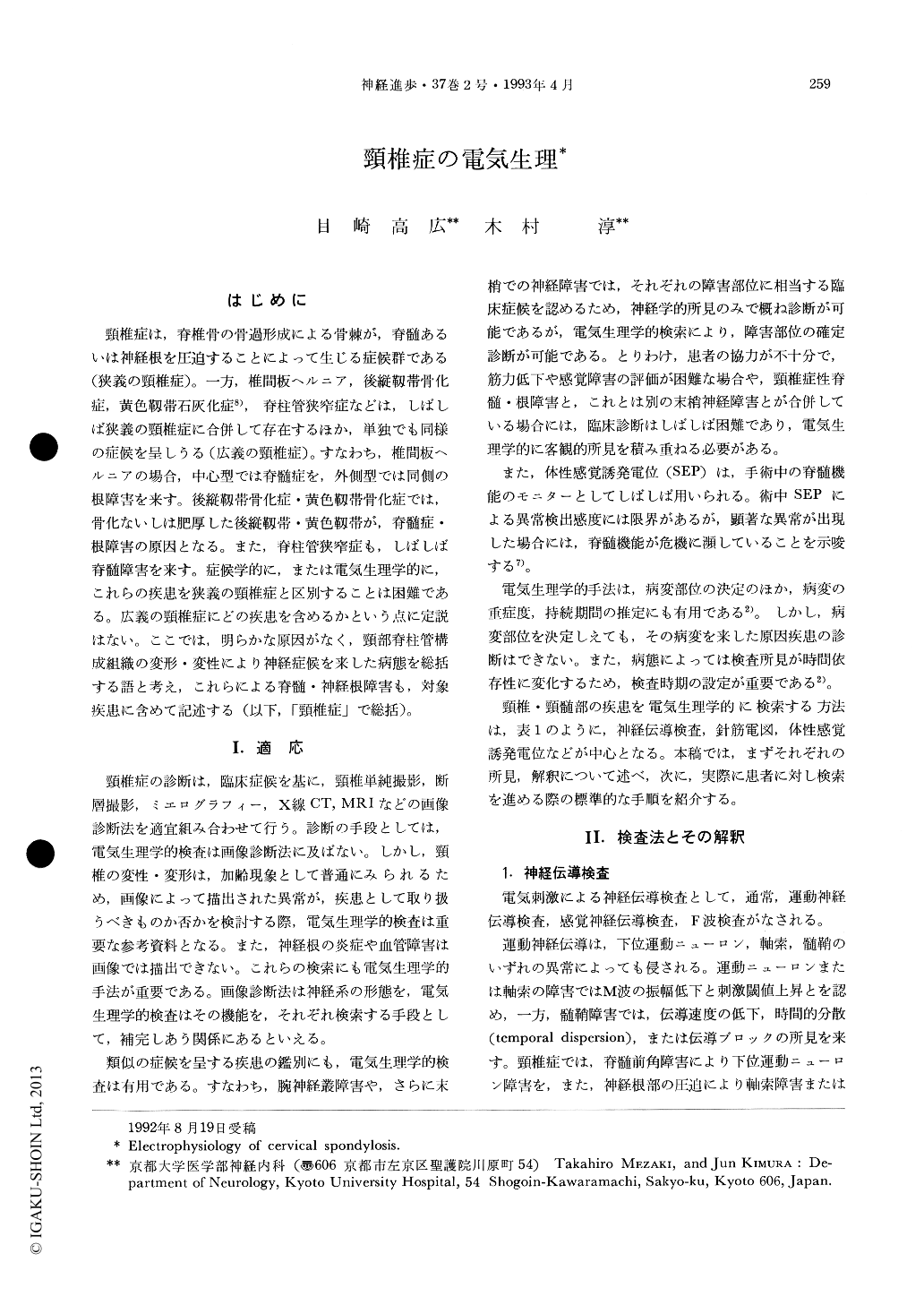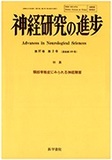Japanese
English
- 有料閲覧
- Abstract 文献概要
- 1ページ目 Look Inside
はじめに
頸椎症は,脊椎骨の骨過形成による骨棘が,脊髄あるいは神経根を圧迫することによって生じる症候群である(狭義の頸椎症)。一方,椎間板ヘルニア,後縦靱帯骨化症,黄色靱帯石灰化症8),脊柱管狭窄症などは,しばしば狭義の頸椎症に合併して存在するほか,単独でも同様の症候を呈しうる(広義の頸椎症)。すなわち,椎間板ヘルニアの場合,中心型では脊髄症を,外側型では同側の根障害を来す。後縦靱帯骨化症・黄色靱帯骨化症では,骨化ないしは肥厚した後縦靱帯・黄色靱帯が,脊髄症・根障害の原因となる。また,脊柱管狭窄症も,しばしば脊髄障害を来す。症候学的に,または電気生理学的に,これらの疾患を狭義の頸椎症と区別することは困難である。広義の頸椎症にどの疾患を含めるかという点に定説はない。ここでは,明らかな原因がなく,頸部脊柱管構成組織の変形・変性により神経症候を来した病態を総括する語と考え,これらによる脊髄・神経根障害も,対象疾患に含めて記述する(以下,「頸椎症」で総括)。
In cervical spondylosis, bone spurs formed by hyperostosis of the spine compress the spinal cord or nerve root. In a strict sense, differential diagnosis includes cervical disorders such as disc hernia-tion, ossification of posterior longitudinal ligament, calcification of yellow ligament or spinal canal stenosis, all of which show similar symptoms. Using a wider definition, however, we consider all these disorders as a spectrum of cervical spondylosis in the following discussion.
Usually, the diagnosis of cervical spondylosis depends on structural changes identified by radiological methods. Electrophysiological examination reflects the functional status of the involved nerves, allowing differentiation between specific abnormality and age related changes of cervical structures. Thus, radiological and electrophysiological studies complement each other.

Copyright © 1993, Igaku-Shoin Ltd. All rights reserved.


